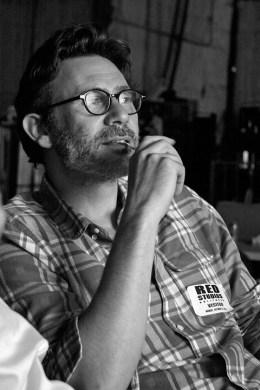
Director Michel Hazanavicius
Nominees:
Woody Allen, Midnight in Paris
Michel Hazanavicius, The Artist
Terrence Malick, The Tree of Life
Alexander Payne, The Descendants
Martin Scorsese, Hugo
Scorsese, Malick, Allen and Steven Spielberg — four American auteurs who bloomed spectacularly in the 1970s, and each of whom in 2011 made his best film in dog years — would have all been ideal escorts for Hazanavicius, the Franco-Lithuanian new kid on the block. But with Payne a shoo-in finalist for The Descendants, there was room for only three. And all had affinities for Hazanavicius’ hometown of Paris.
Scorsese, who after decades of Oscar neglect won Best Picture and Best Director for The Departed, scored with Hugo — like The Artist, a homage to old movies and a declaration of the raptest cinephilia. A boy’s adventure story set in a Paris railway station, whose Merlin is silent-film magician Georges Méliès, Hugo led all films with 11 nominations. (The Artist got 10.) Midnight in Paris, Allen’s biggest hit since Hannah and Her Sisters a quarter-century ago, is similarly besotted by French culture. As for Malick, he lived in Paris for a couple of decades, but The Tree of Life — a critic’s favorite that divided audiences — is a minute examination of midcentury Texas family life that occasionally explodes into the cosmos. Cheers to the Academy for acknowledging its breadth and severe beauty. (Malick and Allen will both be AWOL on Oscar night.)
In this auteur quartet, the odd man out was Spielberg, whose War Horse is as fervent a tribute to old-movie grandeur as The Artist; instead of Charlie Chaplin’s silent comedies and Fred Astaire’s peerless musicals, War Horse expertly summons the epics of David Lean and the painterly vistas of John Ford. The movie got a Best Picture nomination but was shut out in the other major categories. For the most successful director in movie history, it was back to square one: 1976, when Jaws was nominated for Best Picture but not Best Director.
So why should Hazanavicius, whose two O.S.S. 117 spy spoofs landed with a silent thud during their brief Stateside releases, be considered the favorite over all these estimable gents? Because he invested The Artist with an all-American, old-Hollywood verve, wit, pizzazz and, how you say, joie de vivre. Filmed in Los Angeles, The Artist has a Paris accent but speaks pure movie. Its achievement should be both an inspiration and a reproach to le nouveau Hollywood, which has forgotten so many of the lessons it taught filmmakers around the world: how stories can be eloquent without words, and how the most elevating emotions can be conveyed in a mute smile, tear or caress.
